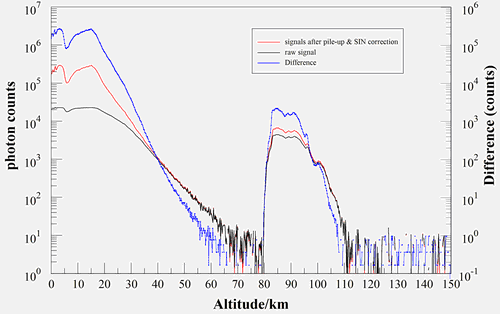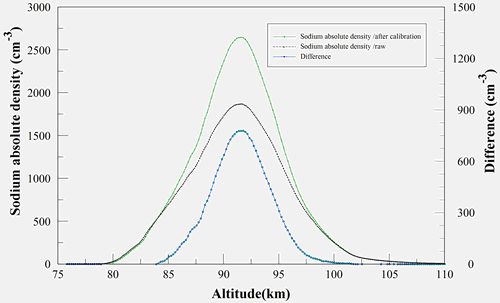New Methods of Data Calibration for High Power-Aperture Lidar
How to optimize the methods for data calibration is of great concern to Dr. GUAN Sai and Prof. YANG Guotao. As members of the ground-based detection group affiliated to State Key Laboratory of Space Weather, National Space Science Center, their job deals with numerous data obtained from the Meridian Project, a massive scientific research project that will monitor weather in space. After years of innovative work, recently they have found a set of new methods for high-aperture lidar data calibration and the newly found methods prove to be more effective, accurate and convenient.
Photomultiplier tubes’ (PMT) pulse pile-up effects and signal-induced noise (SIN) are key factors complicating the extraction of information from lidar return signal, especially from the metal layers’ fluorescence signal. To avoid such disturbances, the research group made substantial improvements on experimental simulation of lidar signals affected by PMT and evaluated the PMTs’ distortions with the High Power-Aperture Sodium Lidar System. The new methods for pile-up calibration also take into account the PMT and High Speed Data Acquisition Card as an Integrated Black-Box as well as a new experimental method for identifying and removing SIN from the raw lidar signals. As a result, contradictions between the limited linear dynamic range of raw signal (55~80km) and requirements for wider acceptable linearity were solved without complicating the current lidar system.
By means of this method, a new balance was achieved in maintaining the linearity of adequate signal (20-110km) while guaranteeing good SNR (i.e. 104:1 around 90km) without debasing quantum efficiency (QE) in one single detecting channel. For the first time, PMT in photon-counting mode is independently applied to extract reliable information of atmospheric parameters with wide acceptable linearity over an altitude range from stratosphere up to lower thermosphere (20-110km).
"This work is of interest to the lidar community and a timely contribution in the light of the program of lidar system development in China and proposals in the United States to construct a new generation of large aperture lidar systems”, reviewer of Optic Express said.
Optical Society of America (OSA)’s journal Optics Express (VOL 21, Issue 6, pp. 7768-7785, 2013) has published the article entitled: New Methods of Data Calibration for High Power-Aperture Lidar. (http://www.opticsinfobase.org/oe/abstract.cfm?uri=oe-21-6-7768)

Comparison of calibrated signal (red) to lidar raw signal (black) (Image by GUAN Sai)

Comparison of sodium absolute number density profiles between signals after calibration (green) and raw (black) (Image by GUAN Sai)


